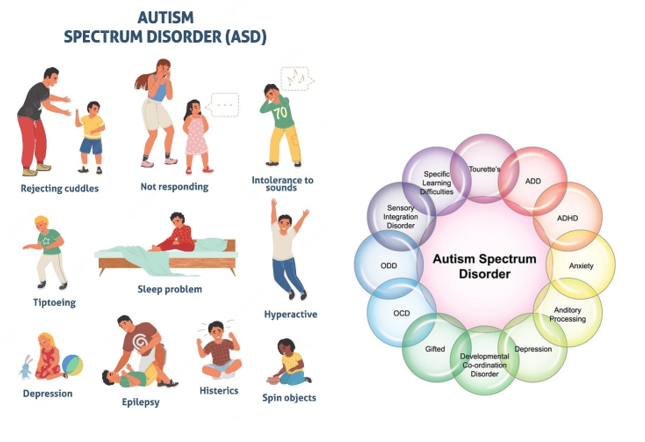The parents of a newborn infant with hypospadias are concerned about when the surgical correction should occur. Which information should the nurse provide?
Repair should be done before the child is potty-trained.
The urethral repair should be done after sexual maturity.
Surgery should be done by one month to prevent bladder infections.
Delaying the repair until school age reduces castration fears.
The Correct Answer is A
Answer: A
Rationale:
(A) Repair should be done before the child is potty-trained: Surgical correction of hypospadias is typically recommended before the child reaches the age of 18 months, ideally between 6 and 12 months. This timing ensures that the child has not yet developed any psychological awareness of the surgery and helps avoid complications during toilet training. Repair before potty training is important to prevent urinary dysfunction and psychosocial issues.
(B) The urethral repair should be done after sexual maturity: Delaying surgical repair until after sexual maturity is not recommended. Early repair is crucial to ensure normal urinary and sexual function, and delaying it could lead to complications such as difficulty with urination and psychological distress.
(C) Surgery should be done by one month to prevent bladder infections: While preventing urinary tract infections is important, performing surgery as early as one month is not typically necessary or recommended. The optimal timing is closer to 6 to 12 months of age when the child is more resilient to surgery but still before the developmental milestones of potty training.
(D) Delaying the repair until school age reduces castration fears: Delaying the surgery until school age can actually increase psychological stress and fear of castration. Early surgical correction is preferred to minimize psychological impact and to allow the child to develop normally without the need for complex explanations or fear of surgery later in life.
Nursing Test Bank
Naxlex Comprehensive Predictor Exams
Related Questions
Correct Answer is A
Explanation
Children with autism spectrum disorder may have difficulty with sensory processing, social interactions, and communication, which can contribute to feeding difficulties and failure to thrive. Providing structured meal times is an important intervention to help establish a routine and promote consistency and predictability.
Structured meal times involve setting a specific time for meals and snacks, providing a calm and quiet environment, and limiting distractions. This can help the child focus on the task of eating and reduce sensory overload that may interfere with feeding. The nurse should also ensure that the child is seated comfortably and at an appropriate height for feeding.
Offering food even if disinterested (B), incorporating play during meals (C), and allowing multiple food choices (D) are not necessarily helpful interventions for a toddler with autism spectrum disorder and failure to thrive. Offering food when the child is not interested may reinforce negative feeding behaviors and can contribute to further feeding difficulties. Incorporating play during meals may distract the child from the task of eating and can be counterproductive. Allowing multiple food choices can be overwhelming for the child and may not promote a consistent and structured feeding routine.
Therefore, the nurse should prioritize providing structured meal times as an important intervention for promoting feeding and growth in a toddler with autism spectrum disorder and failure to thrive.

Correct Answer is B
Explanation
Answer: (B) Counsel the client about the risks and benefits of using oral contraceptives.
Rationale:
(A) Encourage the client to discuss her need for contraceptives with her parents: Encouraging open communication with parents is important, but this action might not be the most appropriate in this context. The client has expressed a desire for confidentiality, and respecting her autonomy is essential, particularly when it comes to sensitive topics like sexual health.
(B) Counsel the client about the risks and benefits of using oral contraceptives: Providing counseling about the risks and benefits of oral contraceptives is the most appropriate action. It ensures the client is informed and able to make a decision that is right for her health and circumstances. The nurse can also discuss other contraceptive options and provide education on safe sex practices. This approach respects the client's autonomy and privacy while ensuring she receives the necessary information to make an informed choice.
(C) Explain that she needs parental approval to receive contraceptives: In many areas, adolescents have the right to obtain contraceptives without parental consent. Requiring parental approval might not only be legally incorrect but could also discourage the client from seeking necessary healthcare, potentially putting her at risk.
(D) Tell the client how to receive a variety of free oral contraceptives from the clinic: While providing information about accessing contraceptives is helpful, this option alone does not address the need for thorough counseling about the risks and benefits. It's important to ensure that the client understands the implications of using oral contraceptives and has the opportunity to ask questions and receive guidance tailored to her individual needs.
Whether you are a student looking to ace your exams or a practicing nurse seeking to enhance your expertise , our nursing education contents will empower you with the confidence and competence to make a difference in the lives of patients and become a respected leader in the healthcare field.
Visit Naxlex, invest in your future and unlock endless possibilities with our unparalleled nursing education contents today
Report Wrong Answer on the Current Question
Do you disagree with the answer? If yes, what is your expected answer? Explain.
Kindly be descriptive with the issue you are facing.
